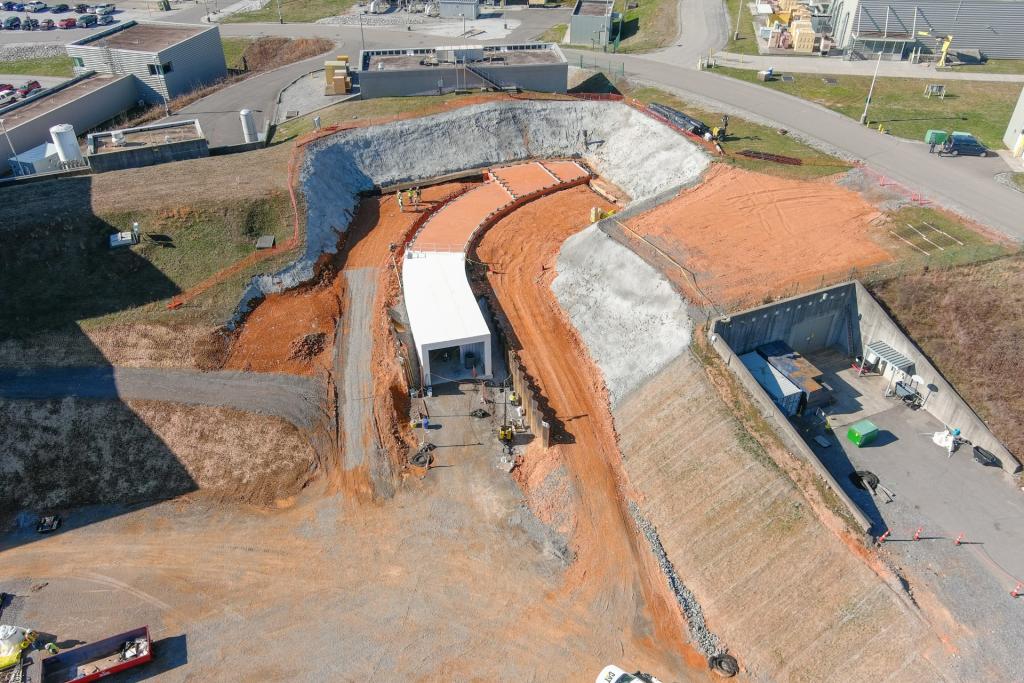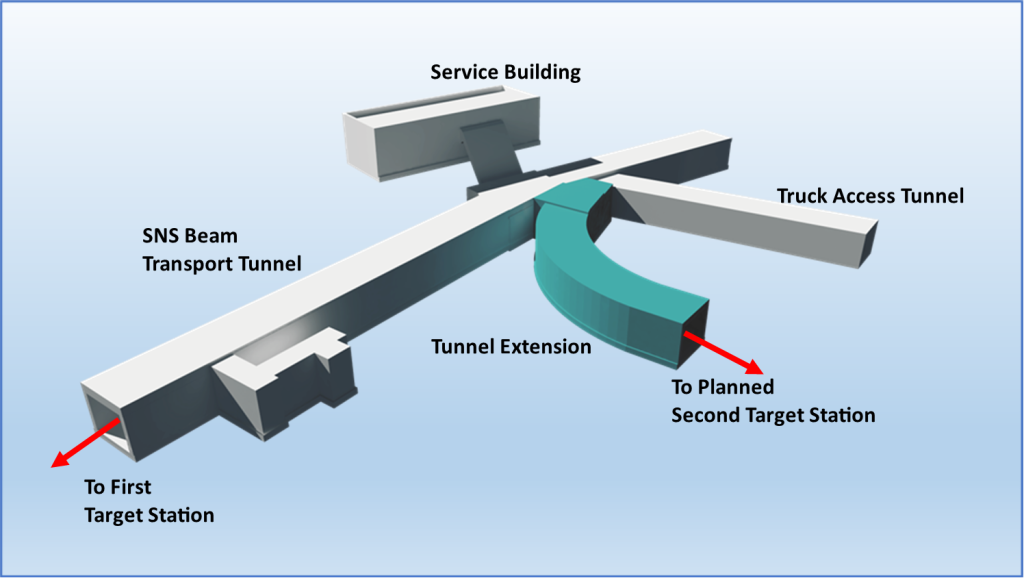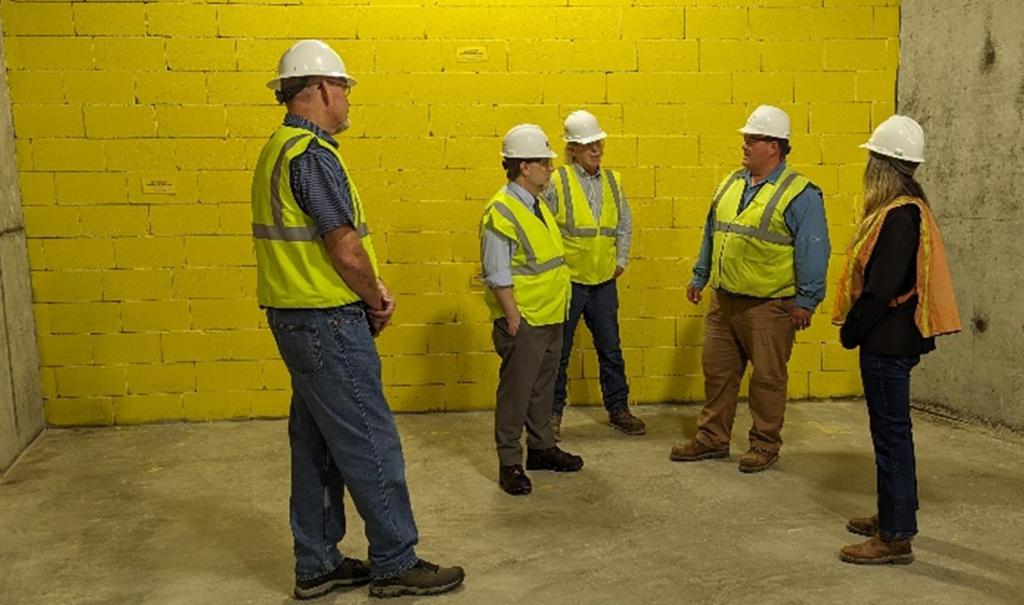For the past several months, the most visible component of the Proton Power Upgrade, or PPU, project for the Spallation Neutron Source, or SNS, at Oak Ridge National Laboratory was the construction of about 3,000 square feet of a curved concrete tunnel extension.
The new section of tunnel will provide the turning and connecting point for the accelerator beamline between the existing particle accelerator at SNS and the planned Second Target Station, or STS. When complete, the PPU project will increase accelerator power up to 2.8 megawatts from its current record-breaking 1.7 megawatts of beam power.

The additional power will be directed through the extension to power the STS, which will have the world's highest peak brightness of neutrons, tailored for probing soft matter such as polymers and biological materials, and complex engineering materials. Neutrons are widely used in research, such as in developing new vaccines, conducting analyses of advanced batteries, and in decarbonization studies. Neutron scattering is an essential technique for advancing materials research to support the U.S. economy and offer solutions to challenges in energy, security and transportation. Neutron scattering provides information that cannot be obtained using any other research method.
In preparation for construction of the new section of tunnel, workers had to overcome the initial challenge of removing about 20,000 cubic yards of dirt, weighing more than 40 million pounds, to expose the portion of the existing SNS beam transport tunnel to which the extension would connect.
"After many years of designing and building the sophisticated electronic and mechanical components needed for the increased beam power - many of which are installed underground - it was a nice change of pace to see major exterior construction taking place," said ORNL's Mark Champion, PPU project manager.

Once the tunnel's concrete base and walls were completed, the construction crews' tasks included cutting personnel and beamline openings into the existing tunnel, and adding waterproofing, roofing, geomembrane lining, electrical service, fire alarms, ventilation systems and controls.
Already the world's most powerful accelerator-based neutron source, the upgrade will increase the flow of neutrons - known as the neutron flux - to the First Target Station, or FTS, and eventually also power the STS.
Power to the FTS - which produces thermal neutrons to analyze samples down to the atomic scale - will increase to up to 2.0 megawatts, enabling new scientific discoveries in such areas as superconductors, energy materials for batteries, and basic physics.
Closing the door - for now
A final construction step for the extension involved installing an 18-foot-thick wall comprised of more than 7,000 concrete blocks across the middle of the tunnel. The wall is designed to be removed in the future during STS construction. In the meantime, it provides radiation shielding during the normal operations of the SNS beamline.

"I guess you could say that instead of a grand opening for the tunnel extension, we had a grand closing," said ORNL's John Galambos, PPU project director. "The tunnel is now ready to fulfill its primary role - enabling future construction crews to connect the Second Target Station to the beamline without significantly impacting First Target Station operations."
The SNS will continue on a planned operational hiatus through June 2024 as crews work to upgrade other parts of the facility.
SNS is a DOE Office of Science user facility at ORNL.
UT-Battelle manages ORNL for the Department of Energy's Office of Science, the single largest supporter of basic research in the physical sciences in the United States. The Office of Science is working to address some of the most pressing challenges of our time. For more information, please visit energy.gov/science.






